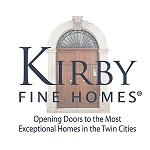Financing a multi-million home can be a scary proposition, but there are plenty of options and packages available for high-end home buyers that can make buying a luxury property fit nicely into a portfolio of sound and secure investments. Although the Fed raised interest rates 17 times in a two-year period from June 2004 to June 2006, now rates have stabilized and experts believe that the rates will stay about the same through mid-year, while some even predict that we might see an interest-rate drop later this year.
Many luxury home buyers are recognizing the value in financing more of their properties than ever before, as opposed to paying big chunks of cash as a down payment for immediate equity. And luckily, the current real estate environment supports this type of a transaction. “We’ve noticed that buyers have a little more leverage on their side of the transaction than they would have had a year ago,” says Brent Rupnow, relationship manager for Private Mortgage Banking Group, a division of Metrocities Mortgage. “In the past year to three years, if they wanted to get into a property offer, they may have had to come in with an all-cash offer and figured out their financing later, because sellers may have been getting 10 to 12 offers, and if you’re selling a $5 million home, you’re more likely to gravitate toward that all-cash offer.”
Today, however, Rupnow says that homes are sitting on the market a little longer and there aren’t as many offers on the table, giving buyers more negotiating room than in the past.
In terms of the types of financing available to luxury home buyers, both Rupnow and Ridings agree that each case is entirely different, and buyers should make sure they work with a lender who consults with them about their financial situation to ensure they obtain a mortgage that will benefit them the most. “We see a lot of clients coming to us looking to leverage higher amounts of financing and put less or even no money down,” says Rupnow. “For purchase prices up to $1.7 million or $1.8 million, we can [still] do no money down.” A number of new mortgage products can make financing even more attractive.
For instance, Ridings points out that the banking community is coming out with longer amortization terms. While in the past, most mortgages were no longer than 30 years, now banks are offering 40- and 50-year amortization terms. Other home buyers may be interested in some of the new interest-only or payment-option adjustable rate mortgages. A Wall Street executive whose main source of income is a hefty year-end bonus, for instance, can pay low amounts for most of the year, but use part of his bonus to pay down his principal balance, thus recalculating the interest-only payments for the next year. These types of mortgages give a homeowner the opportunity to plan for different amounts of money to be allocated to their mortgage at different times of year.
Often the monthly bill coupon itself will indicate several options for that month’s payment, whether it’s interest-only, a minimum payment that temporarily defers interest, or a larger amount that would pay against the loan’s principal. “You can change it literally every month, which gives a [homeowner] a much greater ability to control their own personal cash flow,” says Rupnow. Rupnow’s company also sees a resurgence in mortgage interest rate buy downs, a practice that was popular in the early 1990s. “Under this program, the seller ‘buys down’ the interest rate for the buyer for a set period of time,” explains Tim Kruger, executive vice president, Private Mortgage Banking Group. “This helps to avoid deep price cuts, while providing the buyer with a lower mortgage payment.” This can be temporary-in which the pre-payment of the interest is for a specific period of time, such as one or two years-or permanent.
At the other end of the spectrum, other types of home buyers are gravitating to more traditional, longer-term fixed-rate mortgage options. Because a short-term interest rate is actually a few points higher than the rate for long-term loans, locking into that long-term rate makes sense for clients who do not want to worry about changing rates and aren’t cash-flow sensitive. Whatever financing option you choose, it’s almost certain to benefit your short- and long-term financial health.




